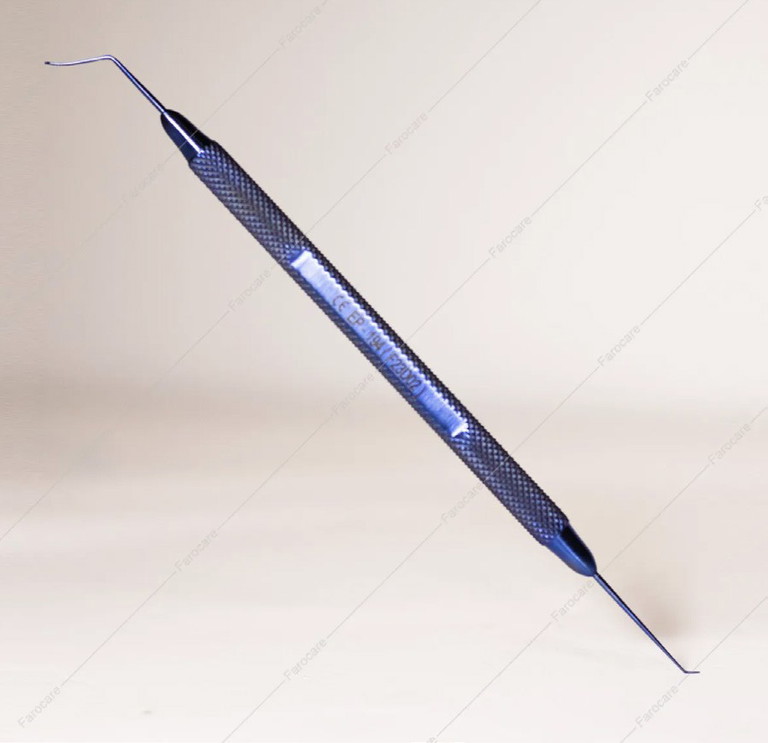The ‘Eureka!’ Moment
WRITER Associate Professor Smita Agarwal
Every refractive surgeon knows the sinking feeling when epithelial cells sneak under a laser-assisted in situ keratomileusis (LASIK) flap or (kerato-refractive lenticule extraction) Klex cap. It doesn’t happen often, but when it does, it’s a nightmare. Epithelial ingrowth can blur vision, distort the cornea, and in rare cases, even melt the flap. Worse still, the standard treatment – relifting the flap and scraping away the cells – carries with it a daunting recurrence rate, climbing from 1% to nearly 44%.
When I began my refractive practice in 2018, I thought I was prepared for everything. Then one day, a patient walked in for cataract surgery – but she carried with her a complication from a LASIK procedure done years earlier. Epithelial cells had migrated beneath her flap, twisting her corneal shape and inflating her astigmatism.
She and I faced a difficult decision: should we remove the cells first, knowing the risk of recurrence was high, or go straight into cataract surgery and gamble on the outcome? Together, we chose the cautious route. I lifted the flap, removed the cells, and waited. Three months later, she returned, stable and clear, and I implanted her toric intraocular lens with confidence. Her astigmatism dropped, and her vision sharpened. A victory – but one tempered by the knowledge of how fragile the outcome could have been.
Then came 2020. COVID slowed everything down, but as refractive surgery began to rise again, so did my thoughts. I was performing more and more Klex and small incision lenticule extraction (SMILE) procedures, marvelling at their precision and stability. But one morning, while operating, a chilling question hit me: What if epithelial cell ingrowth happens after Klex or SMILE? How do we manage it?
With LASIK, we lift the flap. But in SMILE, there is no flap. Would I really have to convert the cap into a flap, throwing away all the advantages of SMILE, just to chase down a few rogue cells? Or flush them deeper, risking permanent implantation?
That same day, almost by coincidence, I performed an incision and curettage on a chalazion. As I used the curette, a spark of inspiration struck. Why not create a curette specifically designed for refractive surgery? One that could slip into the tiny SMILE incision, scoop out the invading epithelial cells, and leave the cap intact?
It was my ‘Eureka!’ moment.
I sketched the idea: a 10 cm handle, 4 mm wide, with two ends – a blunt angled tip to open the incision, and a fine biconcave curette to gently sweep out the cells beneath a flap or cap. The key was that it had to glide effortlessly into the interface without damaging the cornea.
A medical instrument company agreed to help me prototype it. After several back-and-forth refinements, we had it: Smita’s Epithelial Cell Curette.
We tested it first on patients without ingrowth, ensuring it caused no harm. Then came the real challenge: patients who did have epithelial ingrowth. To my relief – and delight – it worked. The cells could be removed without re-lifting the flap or converting the cap. The nightmare suddenly had a simple, elegant solution.
Word spread quickly. I presented the instrument at conferences, published in JCRO, the online companion to the Journal of Cataract and Refractive Surgery, and was honoured with recognition at the American Society of Cataract and Refractive Surgery (ASCRS) film festival in Los Angeles. I even spoke at the European Society of Cataract and Refractive Surgeons (ESCRS) surgical arena, where the response was overwhelming. Surgeons from across the globe approached me, eager to know more. It was only then that I realised how big this problem truly was – and how small innovations can ripple far beyond one’s own practice.
Today, the curette is manufactured by Epsilon USA and distributed locally by Faro Care. I hold no patents, no financial interest. For me, the real reward has been seeing fellow surgeons relieved of their ‘worst nightmare’ and patients spared unnecessary complications.
What began as a spark of worry during a SMILE surgery has now become a tool in operating rooms worldwide. And every time I see one in use, I’m reminded of that morning when an ordinary chalazion curettage whispered an extraordinary idea.
Associate Professor Smita Agarwal MBBS MS (Ophth) GradDipRefCatSurg FRANZCO is a senior comprehensive ophthalmologist based on the South Coast of New South Wales. She is also a Clinical Associate Professor at the Graduate School of Medicine, University of Wollongong, a Senior Lecturer at the University of Sydney, and Head of Ophthalmology in the Illawarra/ Shoalhaven region.

Smita’s Epithelial Cell Curette.